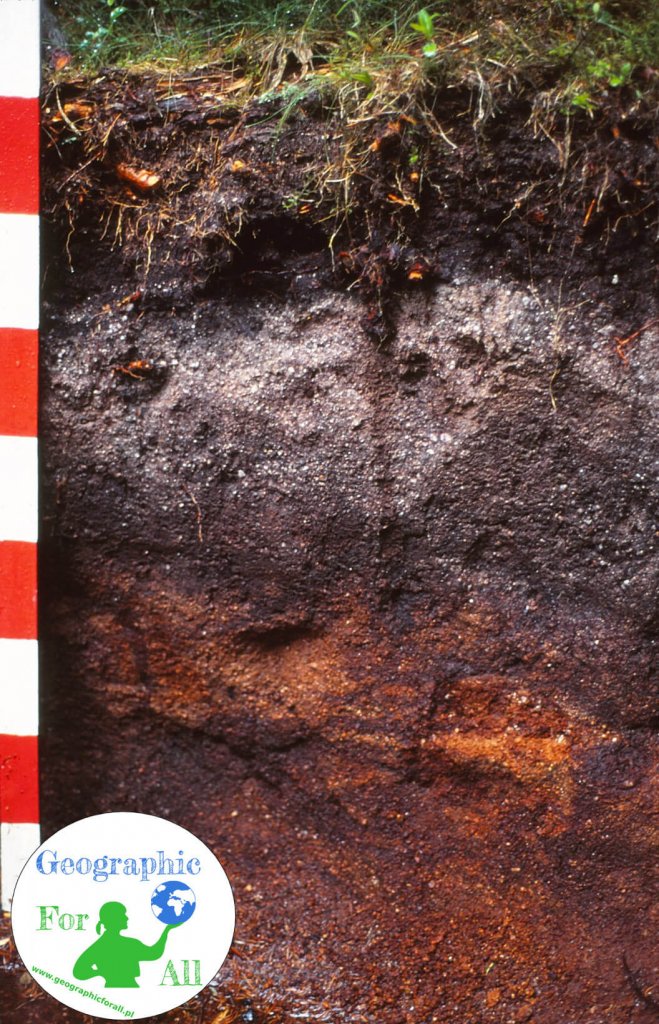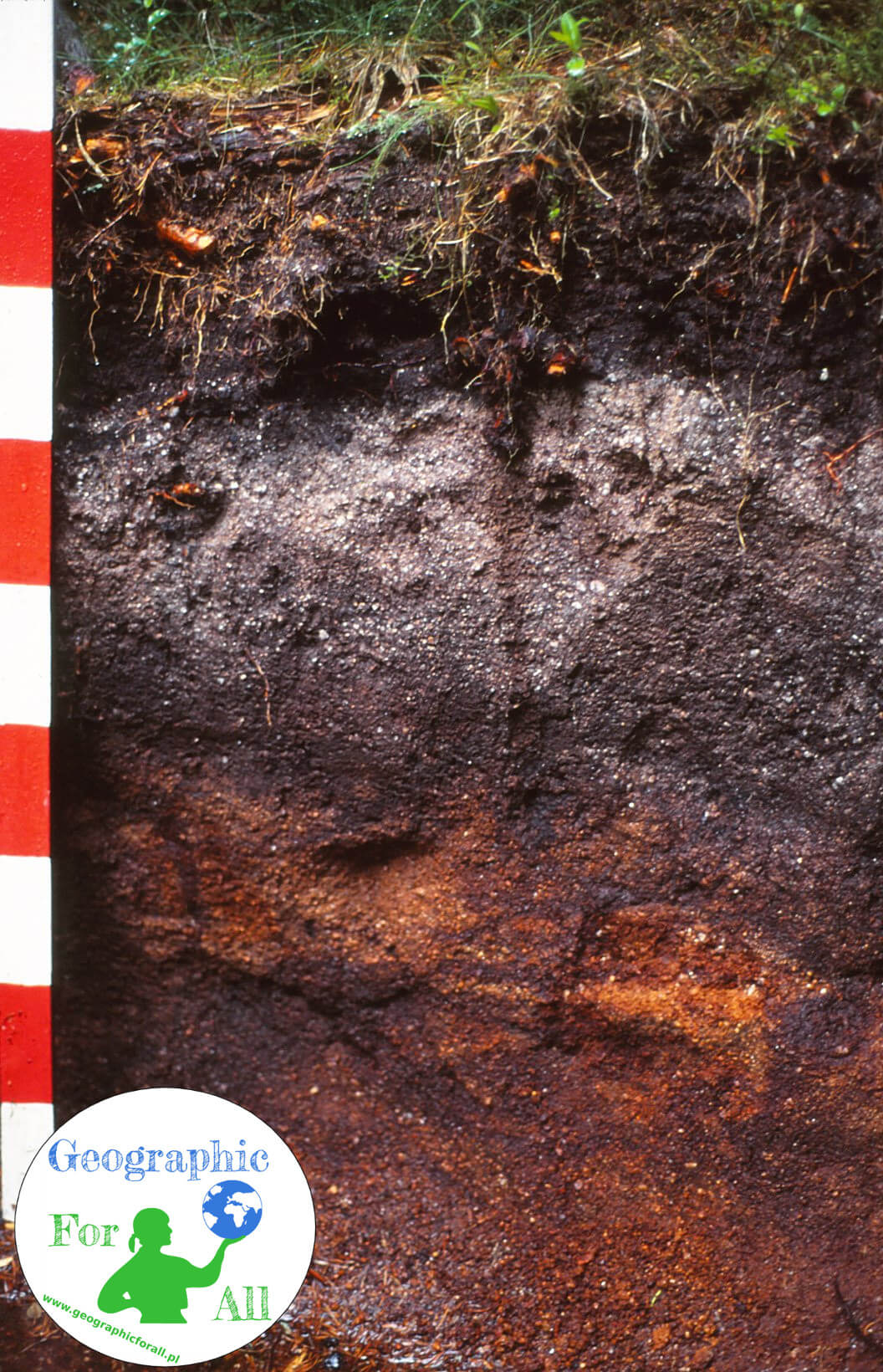The soil composition includes: soil (weathered), water (soil moisture, i.e. hygrococcal, membranous, capillary, gravitational and suspended, groundwater), air </ i> (soil air) and living organisms. It is formed as a result of soil-forming processes.
Soil-forming processes and soil erosion
Soil-forming processes is the continuous transformation of organic and inorganic matter in the upper lithosphere, using the biosphere. They happen according to the flow of matter in nature.
The main factor in soil-forming processes is climate. It is responsible for the weathering speed of rocks, their chemical and physical properties, vegetation development, dynamics of matter circulation.
Side factors affecting the formation of soils are the mineral composition of rocks, terrain and the possibility of sediment formation, and human activity, i.e. drainage, cultivation and breeding, as well as activities related to them.
Just as soils arise, they can also be destroyed. The most common causes of soil erosion are:
- mass movements in the mountains
- flushing through water
- wind erosion
- logging, burning grass, which creates easy prey for wind erosion and leaching through water
- too intensive exploitation
A little less drastic is degradation soils, i.e. reduced fertility . And here the man is mainly responsible: monocultures sterilize the soil, fertilizers and plant protection products provide accumulating foreign chemical compounds. I do not mention the impact of industry and urbanization. Degradation is also a result of natural soil erosion.
Soil composition, i.e. genetic soil levels
Individual types of soils differ from each other, however their common floors are distinguished:

- A0 – litter – the remains of living organisms that are in the initial stage of decomposition
- A1 – humus – the debris are broken down into prime factors, and then in the humification phase they combine with the mineral components of the substrate
- A2 – eluvial / leaching / upper level – minerals and humus are leached one floor below
- B – illusive / wash / lower level – here the washed items from the higher level go to
- * G – glial / lower level – in wetlands, corresponds to level B, lack of air access and high humidity reduce iron particles Fe + 3 to Fe + 2
- C – parent rock – subject to erosion
- D – solid rock
Each type of soil differs in thickness and depth of individual layers. In some layers they are specified, in others the borders are smooth.
Soil properties
Soils are better and worse from a human and economic point of view. The better ones have high fertility , that is the ability to provide plants with growth conditions – air, water and minerals . Fertility depends on:
- physical properties – grain size, structure (grain pattern and soil „glue” between them)
- chemical properties – amounts of mineral salts, sorption (salt dissolution in soil and nitrogen production by bacteria and plants), soil pH preferably between 6.6 and 7.2
- amount of humus
Soil fertility is usually mistaken for soil productivity , i.e. the amount of crops from a given area (with adequate fertility, type of crop and type of agricultural work).


0 Comments for “Soil composition and its formation”